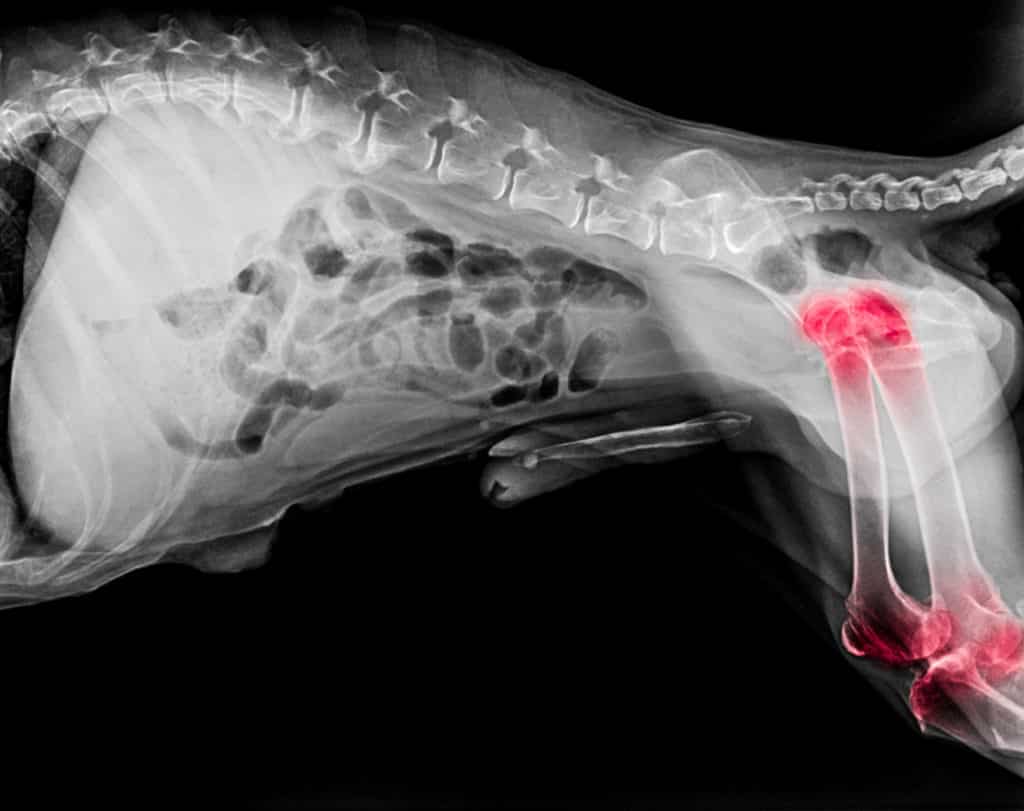Dog Health, Dog Lifestyle
Arthritis in Dogs: Causes, Symptoms & Treatment
Arthritis in dogs is a common disease, particularly in elderly canines or larger breeds. Sadly, it is a progressive disease with no known cure, but with early intervention and the correct management regime, many dogs can live a happy and healthy life with little discomfort.
What is arthritis in dogs?
Arthritis is an inflammatory disease that occurs when the cartilage between the joints becomes less smooth and damaged, this then causes the surface of the bone to rub together and the joints to stiffen and swell. Over time, this causes painful, thickened joints as they start to produce new un-needed bone, which in turn, restricts mobility.
What causes arthritis in dogs?
Arthritis is more common in older dogs, but it can affect canines at any life stage. Some of the most common causes of arthritis in dogs are as follows:
- Normal wear and tear: as your dog ages, the joints are subject to normal wear and tear which could cause arthritis as they reach their golden years
- Genetics: some breeds are more predisposed to developing arthritis these include Labradors, Springer Spaniels, German Shepherds, Golden Retrievers, Rottweilers and Bernese Mountain Dogs. If you’re purchasing one of these breeds as a puppy, it’s a good idea to ensure the recommended health screenings are carried out
- Joint instability: this can occur after ligament damage
- Abnormal cartilage development: this can occur due to overexercise during puppyhood
- Trauma to the joint such as a fracture
Arthritis in dogs’ symptoms
As arthritis is a progressive disease, symptoms tend to develop gradually and worsen over time. Some of the most common arthritis in dogs’ symptoms to look out for are:
- Reluctance to exercise
- Difficulty getting up and lying down
- Limping or lameness
- Stiffness (this may be more obvious after exercise or rest)
- Consistent licking of the joint
- Reduced speed on walks
- Behavioural changes (they may be grumpier and sleep more)
- Reluctance to jump or climb stairs
- Swelling to the joints
Diagnosing arthritis in dogs
If you spot any of the above signs of arthritis, it’s important to contact your vet as soon as possible for diagnosis and treatment. They’ll carry out a full physical exam which will involve manipulating their joints to determine their range of motion and to check for any pain or discomfort. Generally, x-rays will be done to rule out other causes and to review the degree of damage to the joint, although the early stages of arthritis in dogs are typically hard to see on an x-ray.
Arthritis in dogs’ treatment
As there is no cure for arthritis, the treatment plan will focus on management, pain and inflammation control and slowing the disease’s development to improve your dog’s quality of life.
Medication and joint supplements
Pain and inflammation will generally be managed with anti-inflammatories and/or painkillers. Your vet may also recommend joint supplements alongside medications that typically take the form of glucosamine and chondroitin.
Weight control
Weight control is a crucial part of managing the disease as carrying extra weight can put excess strain on joints. Feeding a healthy, balanced diet and regularly exercising your dog will help to prevent obesity and keep up their muscle strength. Your vet will be able to advise on how much exercise is suitable for your dog but generally, it’ll be several shorter walks, rather than one long hike.
Hydrotherapy
Hydrotherapy is a great treatment for arthritis in dogs as it’s a good form of exercise to keep them fit and healthy and it also doesn’t put too much strain on their joints. Ask your vet for a referral or recommendations for local hydrotherapy.
Surgery
In more severe cases, surgery may be an option to either remove damaged tissue or to entirely replace the joint.
Managing arthritis in dogs at home
Alongside your vet’s recommended management plan, there are some things you can do to help your dog at home. Here are some of our top tips:
- Don’t let them jump, skid, chase balls or run on uneven ground
- Encourage them to get up and about throughout the day: long periods of time lying down can cause joint stiffness
- Get them a comfortable, supportive dog bed: memory foam options are a good choice for arthritic dogs
- Keep them warm: you can use a heat pad beneath your dog’s bed to provide extra warmth on chillier days. Also always make sure you dry them off after walks to prevent them from developing a chill
- Cover any slippery floors: use rugs, carpets and mats to stop slipping as dogs with arthritis have weaker muscles, making them more prone to slips which can cause additional injury.
That’s our guide to arthritis in dogs and the current management methods. Looking for more advice on caring for your dog? Learn about the top 10 most common causes of dry skin in dogs, next.
